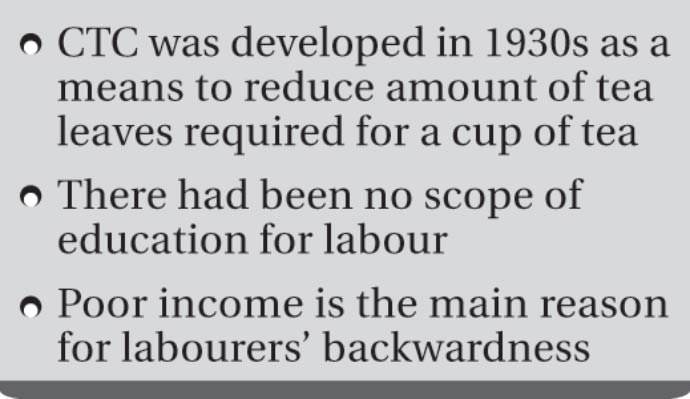
Story behind a cup of tea
IQBAL SIDDIQUEE | Friday, 27 September 2019

SYLHET, Sept 26: Having tea is very simple now at home or any other places although it was not that easy once. The tea companies had to propagate things for popularising it decades ago. The effort that goes behind producing a cup of tea is worth a lot.
It comes from lush tea farms up in the mountains of places where women carefully pick the leaves by hand. ![]()
 Once harvested by farmhands, the leaves are transported to a factory nearby, where they are processed.
Once harvested by farmhands, the leaves are transported to a factory nearby, where they are processed.
This involves drying them out, keeping a close eye on them as they react to oxygen in the air, and then sorting them by size and grade.
Labourers process tea leaf in four steps: withering, rolling, oxidation, and drying.
The possibilities for tea processing are infinite and changing all the time.
Tea has been around for thousands of years and the methods of altering its makeup and use are constantly evolving.
Tea harvesting is a delicate process that is difficult to do quickly for fear of damage to the tea leaves.
Manual harvesting allows for discrimination in selection where priority remains on the younger leaf shoots. This is also the derivation of the saying "two leaves and a bud."
Withering is to reducing water content by 50-70 per cent. The range of withering times for different teas varies for reasons.
The goal of the enzyme kill stage is performed by exposing the leaves to high levels of heat for a very short time (60 seconds or less), similar to blanching vegetables.
There are four stages of different methods of leaf maceration. Leaf bruising is done by shaking the leaves in a bamboo basket or by machinery, which kneads and tears the leaves (just a little).
The bruising can be likened to bruising a fruit, causing the leaves to brown. In this stage, the leaves are shaped into fashionable tea leaf shapes, such as the needle and pearl.
Crushing is another leaf maceration technique in which the leaves are bluntly cut into smaller pieces, usually by machine, triggering a greater release of oxidative enzymes.
Crush, Tear and Curl (CTC), an intense form of leaf maceration, was developed in 1930s as a means to reduce the amount of tea leaves required for a cup of tea; however, it could easily be argued that this sacrificed quality for quantity. The leaves are literally crushed, torn, and curled by a machine.
Sweating and heaping is a rise in thermal enzymatic activity. In various stages and styles of processing, tea leaves are heaped into piles to increase thermal activity and, subsequently, enzymatic activity.
In tea and food, this reaction results not only in a physical browning of the substance (like a banana peel) but also in the creation and unlocking of new compounds at a molecular level.
The goal of the last step is to reduce the water content of the tea leaves down to 3-6 per cent.
The exact time of drying varies from 5 to 30 minutes depending on the water content of the leaves prior to drying.
But the tea pluckers suffer for violation of their human rights. Suffering from inhuman torture and behaviour alongside poor wages and others, thousands of tea labourers tried to revolt against the British owners of tea gardens and attempted to return to their birthplaces in Bihar, Odisha, UP etc.
The much-talked about protest attempt, known well as 'Mulluk Cholo', which is by now considered a historical event, ended in a tragic way on May 20, 1921.
About 30,000 tea labourers left their workplaces in Sylhet region, and were walking towards Chandpur Meghna Ghat.
As they reached, police opened fire on the protesters. Many of the workers were killed and the bodies were thrown into the river while the others fled.
Marking the incident, Tea Workers Day is observed every year.
Besides, portraying the revolt in British era, a small structure 'Mulluk Bhaskorj', was set up two years ago on Deundi tea garden in Habiganj.
About 200,000 tea workers, both regular and casual, are employed in 166 gardens in the country.
There had been no scope of education, but by now it is changing a little. Yet most of the community people especially the females cannot dream for modern living. Still they have to bargain for wage hike and other facilities.
"Poor income is the main reason for our backwardness," said a labourer of a tea garden in Sylhet.
"Like our forefathers, our life begins as tea labourers and ends as same," he said.
"Some people from among us have left the profession. Yet things are negligable," he added.
"There should be a permanent decision about the wage," said Makhon Lal Kormokar, president of Bangladesh Tea Workers' Union. "We demand Tk 300 per day and revision of the wage every six months considering price hike and others," he added.
The second and last part of the story will be published on Sunday.